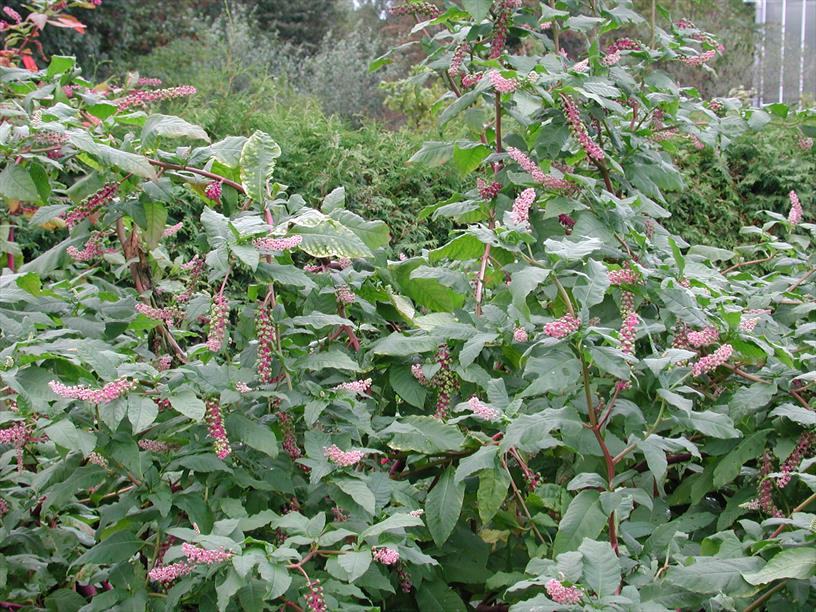American Pokeweed
Phytolacca americana
Pokeweed family (Phytolaccaceae)
Berries that show their true colour
The American pokeweed grows well in rich, moist soil. In the spring, young shoots appear from the fleshy taproot and can grow into a sizable plant of 1 to 2 m in height. The leaves are elliptic to ovate-lanceolate. The seeds, plants and berries are poisonous. From July to September clusters of inconspicuous whitish flowers appear but it is the dark purple fruits that resemble berries that are most spectacular.
This species originates from North America where native Indians used the dark red juice from the berries to decorate their skin, clothes and jewellery. More recently in Europe it was discovered that pale wine could be coloured a deep red with this juice but the practice was quickly banned in France because the berry is poisonous. According to homeopathic practices, as with other poisonous plants, Phytolacca helps to heal, among other things, problems with breastfeeding.
Themes
Crown jewel in the Alkmaar Botanic Garden.
The fruits and seeds of Phytolacca americana are eaten and disseminated by birds and probably mammals too. They are said to be an important source of food for the mourning dove (Zenaida macroura).
Despite its toxicity the American indians chewed the berries as a remedy for rheumatism. The plant is also used in homeopathy.
The juice of the fruit can be used as a dye and is also used to colour port and red wine.
Parts of this plant are highly toxic to livestock and humans, and it is considered a major pest by farmers.
Details
| Description: | Herb, 1-2.5 m. |
|---|---|
| Distributions: | North america; introduced in europe. |
| Habitat: | Brushwood in urban areas. on a sunny, open sites with moist, rich soil. |
| Year cycle: | Perennial (trees and shrubs included) |
| Hardiness: | Colder than -4 f (very hardy) |
| Flowering period: | Juli - september |
| Flower color: | White, green, pink, purple |
| Notes on flowers: | Flowers with 5 sepals, white or greenish white to pink or purple. |
| Fruiting period: | Augustus - oktober |
| Fruit color: | Black, purple |
| Notes on fruits: | Pulple-black berries, 6-11 mm in diameter; seeds black, lenticular, 3 mm, shiny. |
| At its best: | Juli - oktober |



